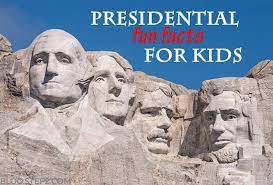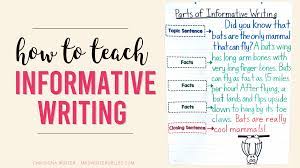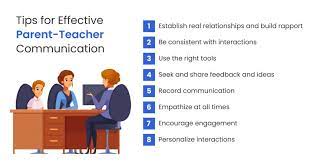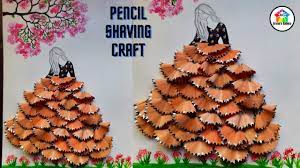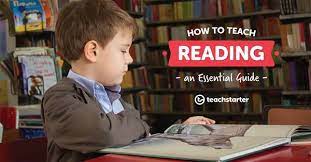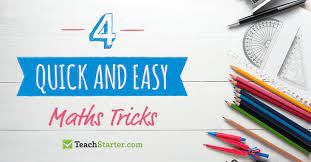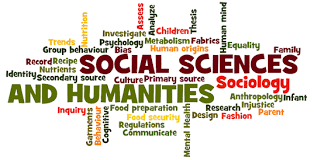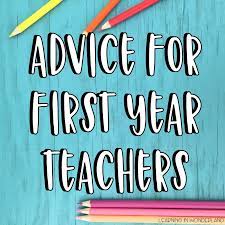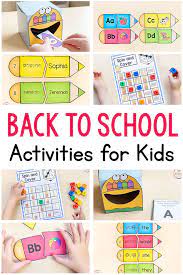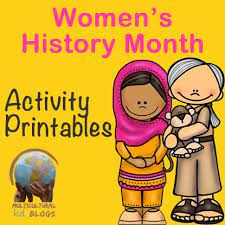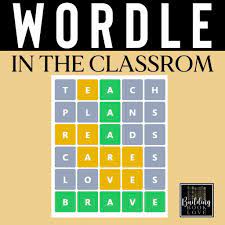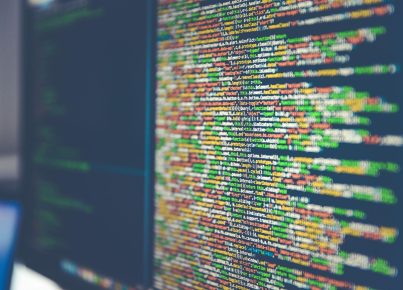Did you know that the President of the United States has a lot of interesting history? Let’s dive into some fun facts about U.S. Presidents that kids will find fascinating!
George Washington, our first president, did not have a middle name. Unlike many of us today with a first, middle, and last name, George Washington just had two names!
Thomas Jefferson was not only a president but also an architect. He designed his famous home, Monticello, as well as the campus of the University of Virginia.
The teddy bear is named after President Theodore “Teddy” Roosevelt. After he refused to shoot a bear cub on a hunting trip, a toy maker named a stuffed bear “Teddy’s bear,” and it became a huge hit.
Abraham Lincoln was an extraordinary wrestler before becoming president. As a young man, he was only defeated once in about 300 matches and is enshrined in the Wrestling Hall of Fame.
John F. Kennedy was the first president who was also a Boy Scout. Scouting teaches valuable skills and Kennedy was part of the program in his youth.
Barack Obama made history not once, but twice! He became the first African American President of the United States in 2009 and won the Nobel Peace Prize that same year.
Did you know that President James Garfield could write with both hands at the same time — in different languages? He could write Latin with one hand and Greek with the other!
Franklin D. Roosevelt served four terms as president, more than any other president. After him, an amendment to the Constitution limited presidents to two terms.
Grover Cleveland is the only president to serve two non-consecutive terms, making him both our 22nd and 24th president.
Donald Trump is known for being one of the oldest presidents elected and also for his background as a reality TV star before taking office.
Sharing these quirky pieces of presidential trivia can make history lessons more enjoyable for kids and adults alike!
Informative Writing: Teaching Tips and Unit Plans
The art of informative writing is a fundamental component of educational curriculum across all grade levels. It is imperative for students to learn how to convey information clearly and accurately, as these skills are critical in both academic and real-world settings. This article will provide tips for teaching informative writing and suggest strategies for unit planning to help educators mold competent writers.
Teaching Tips for Informative Writing:
1. Start with the Basics
Begin with the concept of the 5 Ws – Who, What, Where, When, and Why. Encourage students to gather comprehensive information covering these aspects before they begin writing.
2. Emphasize Clarity and Precision
Teach students to be clear and precise in their language. Encourage them to avoid ambiguity by using specific terms and definitions that can aid the reader’s understanding.
3. Show Examples
Use exemplar texts as models. Analyze well-crafted informative pieces with your class, pointing out effective techniques employed by professional writers.
4. Teach Organizational Skills
Provide lessons in structuring an informative piece, including an introduction, body paragraphs each covering one aspect or detail, and a concise conclusion.
5. Incorporate Visual Aids
Train students to enhance their writing by including charts, diagrams, and photographs to complement their text and support their explanations or descriptions.
6. Focus on Revision
Make the revision process an integral part of writing practice. Have peers review each other’s work for clarity, coherence, and organization.
7. Use Writing Prompts
Create activities that incorporate prompts aligned with real-world scenarios or academic content areas, which can encourage students to engage more deeply with the task of informative writing.
Unit Planning Strategies:
Week 1-2: Introduction to Informative Writing
– Activities: Understanding ‘5 Ws’, identifying features of informative texts.
– Homework: Write a short paragraph on a familiar topic incorporating the ‘5 Ws’.
Week 3-4: Developing Skills
– Activities: Lessons on clarity and precision in writing; vocabulary exercises.
– Homework: Write an informative piece describing a scientific concept or historical event using new vocabulary learned.
Week 5-6: Structure and Organization
– Activities: Organizing ideas using outlines; analyzing text structures in sample essays.
– Homework: Compose an organized outline for an informative topic selected by the student; write a draft based on the outline.
Week 7-8: Incorporating Visuals and Revision Techniques
– Activities: Lessons on selecting appropriate visuals; peer revision exercises.
– Homework: Produce a draft of an informative essay with accompanying visuals; participate in peer revision.
Week 9-10: Real-world Application
– Activities: Writing prompts related to current events or cross-curricular subjects (e.g., Science or History).
– Homework: Final project – research and write an extended informative paper on a topic approved by the teacher with multiple sources cited.
By integrating these teaching tips within a structured unit plan, educators can guide their students towards becoming more effective informative writers who are adept at explaining topics with clarity and coherence across various subjects.
Parent Teacher Communication Strategy Ideas and Tips
As educators and parents navigate the complex landscape of a child’s education, effective parent-teacher communication stands as a critical factor in supporting student success. Below are strategies and tips to foster a constructive and ongoing partnership between parents and teachers.
1. Open Communication Channels: Establish clear and open channels for communication. This could include regular newsletters, emails, phone calls, or use of school-provided digital platforms where progress and concerns can be shared routinely.
2. Scheduled Conferences: Hold regular parent-teacher conferences to discuss students’ achievements and areas of improvement. These face-to-face meetings can build trust and allow for detailed conversations about the student’s educational journey.
3. Utilize Technology: Take advantage of technology to enhance communication. Apps and online portals where teachers can post updates and parents can view their child’s progress make information accessible and encourage parent engagement.
4. Create a Positive Dialogue: Approach each interaction with positivity, focusing on strengths as well as areas for growth. Recognising achievements encourages students and avoids making communication seem solely like a channel for addressing problems.
5. Cultural Sensitivity and Inclusivity: Be sensitive to cultural differences in communication styles and preferences. Offer translators or written materials in home languages when needed to ensure that all families can engage effectively.
6. Parent Involvement: Invite parents to participate in classroom events or volunteer opportunities. When parents are involved in school activities, they gain insights into the educational environment which supports better conversations about it.
7. Educational Workshops for Parents: Organize workshops that help parents understand curriculum content, teaching methods, or assessment criteria. Educated parents can better assist their children and have more meaningful discussions with teachers.
8. Set Communication Expectations Early: At the start of each academic year, outline how often you’ll communicate with parents, the best times for them to reach you, and what issues require immediate contact versus what can wait for scheduled meetings.
9. Be Proactive with Concerns: Don’t wait for small concerns to become larger issues before communicating with parents. Bringing concerns up early allows for collaboration on solutions before problems escalate.
10. Listening Skills: Encourage active listening during conversations with parents; acknowledge their concerns or suggestions, which shows respect for their role in their child’s education.
11. Feedback Channels for Parents: Provide opportunities for parents to give feedback on various aspects of their child’s school experience including communication with teachers—this feedback can be used to improve strategies over time.
12. Confidentiality: Ensure that all communications maintain confidentiality regarding student information unless sharing is agreed upon by all involved parties for the purpose of assisting the student.
Implementing these strategies will facilitate a more dynamic partnership between educators and families, setting the stage for effective collaboration geared toward the best interests of the students’ learning experiences. By prioritizing clear, open, and positive interactions tailored to meet diverse needs, both parents and educators can work together towards fostering an environment conducive to educational excellence.
Fun and Easy Crafts for Kids: Pencil Shaving Goodness
Crafting with children can be a fun and educational experience that stimulates creativity and fine motor skills. One of the simplest yet surprisingly delightful activities involves something as common as pencil shavings. Here’s a fun craft project that turns these colorful byproducts into art.
Materials Needed:
– Pencil sharpeners
– Colored pencils
– Plain white paper or construction paper
– Glue
– A pair of scissors (optional)
– Clear contact paper (optional)
Instructions:
1. Start by gathering a good amount of pencil shavings. You can plan ahead and save these from when your kids do their homework, or you can have a sharpening session to procure a variety of colors.
2. Lay out a piece of paper for your craft’s backdrop.
3. Encourage your child to think about what they would like to make. Pencil shaving creations can range from simple abstract designs to more intricate images like flowers or the sun.
4. Once an idea is in place, start arranging the shavings on the paper without glue to create a rough draft of the image.
5. After your child is happy with their design, help them apply glue on top of where each shaving will lay. Then carefully place the shavings onto the glue spots.
6. Let the artwork dry completely before moving it.
For longevity:
– After drying, you might want to gently press down each shaving so it’s entirely flat against the paper.
– To preserve the craft, cover the artwork with clear contact paper, which also gives it a nice shine and prevents shavings from falling off.
Pencil shaving crafts allow kids to explore their imagination and can be made into cards, framed art pieces, or even bookmarks if you cut them into strips and laminate them. It’s also an exceptional way to teach children about reusing and recycling materials in creative ways while developing an appreciation for unconventional art materials that are readily available at home. Enjoy this eco-friendly craft with your little ones for an afternoon filled with creativity and learning!
How to Teach Reading: An Essential Guide
Teaching reading is one of the most rewarding challenges that educators and parents can undertake. It is the cornerstone of education and a fundamental skill that unlocks the vast world of knowledge and imagination. Here’s an essential guide to help you navigate the process of teaching reading to children.
Begin with the Basics
Reading begins with understanding the relationship between letters and sounds, known as phonemic awareness. Start by introducing the alphabet and its corresponding sounds through fun activities such as singing alphabet songs, playing phonics games, or using flashcards.
Develop Phonics Skills
Once children recognize letters, focus on phonics—the ability to connect letter symbols with their associated sounds to form words. Utilize workbooks, apps, or engaging online programs that provide systematic instruction in phonics.
Incorporate Plenty of Practice
Practice is crucial in solidifying reading skills. Encourage frequent reading of age-appropriate books. Starting with simple texts helps build confidence as children master basic words before moving on to more complex material.
Focus on Comprehension
Understanding what they read is just as important as the act of reading itself. Ask questions about the story’s characters, settings, and plot to check comprehension and inspire critical thinking.
Make it Enjoyable
Fostering a love for reading from an early age sets the foundation for enthusiastic lifelong readers. Create a cozy reading nook, choose diverse and interesting books, participate in read-aloud sessions, and let children pick books that pique their interest.
Offer Support and Encouragement
Positive reinforcement goes a long way in motivating children. Celebrate small victories and provide gentle guidance through challenges. Avoid criticism that can lead to frustration or reluctance towards reading.
Use Multisensory Approaches
Different children learn best through different senses. Incorporate tactile experiences like tracing sandpaper letters, visual aids like colorful pictures accompanying text, or auditory support like spoken-word recordings.
Be Patient and Consistent
Remember that each child develops at their own pace. Regular practice coupled with patience helps build strong readers over time, not overnight.
Teaching reading is an investment in a child’s future. By employing these strategies consistently and mindfully, you are equipping them with one of life’s most valuable skills.
4 Quick and Easy Math Tricks for the Classroom
Connecting mathematics to fun and practical applications can make it a favorite subject among students. Empower young learners with these four quick and easy math tricks that are perfect for the classroom environment:
1. Multiplication by 11: To quickly multiply any two-digit number by 11, simply add the two digits of the original number together and place the sum in between them. For instance, to multiply 34 by 11, you add 3 + 4 to get 7, then place the 7 between the 3 and the 4 to get 374.
2. The Nine Times Finger Trick: For multiplication problems involving nine, students can use their fingers to find the answer. Have them spread out all ten fingers and lower the finger corresponding to the number they’re multiplying by nine (for example, for 9 x 3, lower the third finger). The number of fingers to the left of the lowered one represents tens, and to the right are ones.
3. Fast Addition with Round Numbers: Teach students to round numbers up or down to make them easier to add quickly in their heads. For example, when adding 456 + 298, it’s easier first to adjust 298 up to 300 (adding 2), then add this to 456 (to get 756), then subtract those extra 2 you added at the beginning.
4. The Magic of Number 5: When multiplying an even number by five, simply halve the number and put a zero at the end. For odd numbers, subtract one from that number before halving it and then append ‘5’ at the end instead of ‘0’. For example, to multiply 6 by five, half of six is three, so just add a zero for your answer of 30; while multiplying five with nine (an odd number), reduce it first to eight, half is four, so your answer is forty-five.
Incorporating these math tricks into classroom activities not only makes learning fun but also enhances mental calculation skills for students of all ages.
Humanities Social Sciences Free Teaching Resources
Access to educational resources is a fundamental aspect of fostering growth and understanding in the field of humanities and social sciences. As academic disciplines that explore human society and social relationships, humanities and social sciences encompass a wide spectrum of subjects, including history, geography, politics, psychology, sociology, anthropology, and more. To support educators and students alike, an array of free teaching resources is available online. This article highlights some of the most valuable repositories and tools where individuals can find free materials to aid in the teaching and learning of these subjects.
One standout resource is the edX platform. Offering courses from universities all around the world, edX has a broad selection in humanities and social sciences. Though some courses may require payment for certification, the materials themselves—the video lessons and readings—are available free of charge.
Another invaluable resource is the OpenStax initiative by Rice University. OpenStax provides free, peer-reviewed, open-source textbooks which can serve as primary or supplementary reading material for courses across various disciplines within the humanities and social sciences.
The Library of Congress also offers a rich repository with its Teachers section. Within this resource are lesson plans, primary documents, and activities centered on history and culture that can easily be integrated into classroom curriculums.
Project Gutenberg is an archive that offers over 60,000 free eBooks, among which are many classics relevant to humanities courses. Here educators can find works of literature that have entered the public domain.
The Smithsonian Learning Lab is another powerful tool that holds millions of digital resources from across the Smithsonian’s museums, research centers, libraries, archives, and more. These resources include written texts, art pieces, recordings, and historical items—perfect for crafting engaging lessons in cultural studies.
For psychology and sociology instructors looking for specialized content to encourage critical thinking among their students, the Social Science Research Network (SSRN) distributes thousands of scholarly papers for free. The content focuses heavily on contemporary research across social science fields.
Moreover, teachinghistory.org is supported by the U.S. Department of Education and offers resources specifically designed for K-12 teachers who focus on American history education. These materials include teaching guides, primary source documents, professional development tools, and more for enriching history lessons.
Lastly, MERLOT II (Multimedia Educational Resource for Learning and Online Teaching) is a program run by California State University which provides access to curated online learning materials in various languages across numerous disciplines.
In conclusion, there exists a wealth of free teaching resources dedicated to aiding educators in their quest to impart knowledge in humanities and social sciences. These platforms not only provide cost-effective options but also offer diverse methods by which students might explore these disciplines deeply—encouraging both academic success and personal growth through exploration of human society past and present.
First Year of Teaching Advice
The first year of teaching can be a thrilling and challenging experience for new educators. As rookies in the field, they are eager to make a difference but may also confront various hurdles that they didn’t anticipate during their training. Here are several pieces of advice to help first-year teachers navigate their initial year at the helm of the classroom:
1. Build Relationships: Getting to know your students is foundational to a successful classroom environment. Learn their names quickly, show interest in their lives, and establish trust. This connection with students often translates into better engagement and respect.
2. Plan Thoroughly but Be Flexible: While having detailed lesson plans is essential, it’s equally important to adapt when things don’t go as expected. Be ready to modify your plans based on students’ understanding or unforeseen circumstances.
3. Seek Mentorship: Don’t hesitate to ask for help or advice from experienced colleagues. Find a mentor who can provide you with guidance, support, and feedback – it makes all the difference.
4. Set Clear Expectations: From the start, establish clear rules and routines for your classroom. Consistent enforcement of these rules helps maintain order and ensures all students know what is expected of them.
5. Take Care of Yourself: Teaching is an intensive job, and burnout can happen quickly if you’re not careful. Prioritize self-care by getting enough rest, exercising, eating well, and finding time for hobbies and relaxation.
6. Reflect on Your Practice: Regularly spend time reflecting on your teaching methods, what’s working well and what isn’t. This self-assessment will guide your professional growth and improve your teaching efficacy.
7. Stay Positive: Stay focused on the positives amid challenges. Celebrate even the small victories; these moments help keep your spirits up and motivate you to continue making a difference.
8. Embrace Professional Development: Attend workshops, conferences, or pursue further education to stay abreast of new teaching strategies and developments in education.
Remember that every experienced teacher was once a beginner too; with perseverance, passion, and dedication to continuous improvement, the first year can lay down a robust foundation for an impactful teaching career.
Back to School Activities for Teachers From Pre School to Middle School
As summer ends and the new school year beckons, educators from preschool to middle school gear up for the return of eager young minds. This period marks a fresh start for both teachers and students, and engaging back-to-school activities are essential for setting a positive tone. Here are creative and educational activities tailored to the needs of different education levels.
Preschool:
1. All About Me Boxes: Encourage children to fill a small box with items that represent their personalities and interests. This activity is excellent for show-and-tell and helps kids to introduce themselves to their peers.
2. Classroom Scavenger Hunt: Create a scavenger hunt that helps children familiarize themselves with the classroom layout and materials. Items on the hunt can include a favorite book, puzzle piece, or a nap mat.
3. Color Day: Choose a color for each day during the first week and incorporate activities related to that color. This could involve wearing clothes in that color, bringing objects from home, or enjoying snacks of that hue.
Elementary School:
1. Time Capsule: Have students bring in an item they would like to remember about their life right now. Place these items in a container to be opened at the end of the school year.
2. Goal Setting Tree: On a bulletin board, create a tree where each leaf represents a goal set by a student for the year. It’s visual growth mindset encouragement.
3. Getting-to-Know-You Bingo: Create Bingo cards with various statements like “has been on an airplane,” “has a pet fish,” etc., prompting students to find classmates who match the descriptions.
Middle School:
1. Interview Introductions: Pair students up and have them interview each other before presenting their partners to the class. It’s an excellent way for them to practice listening and speaking skills while learning about their peers.
2. Dream Board Projects: Have middle-schoolers create visual representations of their aspirations using magazines, photos, drawings, or even digital platforms.
3. Collaborative Classroom Contract: Involve students in creating classroom norms by drafting a collaborative contract that everyone signs, promoting ownership and accountability for their learning environment.
Reflected in these activities is an understanding that back-to-school time is not merely about setting academic expectations; it’s also about building community, fostering relationships, and nurturing students’ emotional well-being—crucial components in effective education at any level.
Womens History Month Activities for Kids
Engaging children in Women’s History Month is a fantastic way to educate them about the vital contributions women have made to society. Here are a range of activities tailored for kids that combine education and fun during this important month:
1. Biography Time: Encourage children to read the biographies of influential women. From world leaders like Eleanor Roosevelt to pioneers in science like Marie Curie, these stories can be both inspiring and educational.
2. Create a Timeline: Have kids create a timeline that marks significant events in women’s history. This activity will help them understand the progress made over the years and recognize key milestones.
3. Role Play: Let the children dress up as influential women and present a short bio to others. Role-playing can boost kids’ public speaking skills and confidence while they learn about history.
4. Art Projects: Choose an art form—like painting or sculpture—that was popularized or revolutionized by women. Kids can try their hand at this art style, which will help them appreciate the contributions of women artists.
5. Visit Museums: If possible, take children to museums with exhibits highlighting women’s accomplishments, which can provide a more interactive learning experience.
6. Movie Day: There are many kid-friendly movies and documentaries that feature the stories of notable women throughout history. Watching and discussing these films can be an engaging way for kids to learn.
7. Story Time with Women Authors: Read books written by or about significant female figures in history, which can range from Amelia Earhart to Malala Yousafzai.
8. Interview a Woman in the Community: Have kids prepare questions and interview a woman in their community, such as a local business owner, educator, or public servant, to learn about her experiences and achievements first-hand.
9. Crafting Women’s History Month Badges: Children can craft badges featuring famous quotes from historical women or symbols associated with women’s right movements.
By participating in these activities, not only do children gain knowledge about Women’s History Month, but also they learn to appreciate the diverse roles and achievements of women in shaping our world. These activities can spark conversations at home and in classrooms fostering an understanding of gender equality from an early age.
Teaching With Wordle Classroom
In recent years, the surge of interest in word-based puzzles has reached educational settings with teachers incorporating games like Wordle into their classrooms. Wordle, a web-based word game where players have six attempts to guess a five-letter word, has turned into an unexpected yet powerful teaching tool. When incorporated into the classroom, it offers a range of benefits to students including enhanced vocabulary acquisition, spelling improvement, and development of deductive reasoning skills.
Using Wordle for Vocabulary Building
Wordle naturally encourages players to expand their lexicon as they brainstorm possible five-letter words. In a classroom setting, teachers can leverage this by setting specific parameters, such as themes related to current lessons or units. This targeted approach ensures that students are being exposed to and are practicing new words that are relevant to their coursework.
Facilitating Spelling Mastery
Correctly guessing the Wordle of the day requires not only thinking of the right word but also spelling it correctly. It’s a fun way for students to practice their spelling skills without the pressure of traditional assessments. Misspelled guesses also serve as excellent teachable moments for discussions about common spelling rules or exceptions.
Promoting Logical Reasoning and Problem Solving
Wordle is essentially a puzzle that requires logical deductions. Teachers can discuss strategies for choosing starting words or deciding which letters to retain or discard after each guess. This form of problem-solving promotes critical thinking and can be related back to mathematical and scientific methods of hypothesizing and testing theories.
Enhancing Collaboration and Social Learning
Teachers can have students work in pairs or small groups to solve the daily Wordle. This collaborative approach fosters communication skills as students must articulate their reasoning and listen to their peers’ suggestions. It also builds a sense of community as students share in the success or learn from the challenges of each game.
Addressing Diverse Learning Styles
For visual learners, the color-coded feedback after each Wordle guess is a clear manner of showing progress. Auditory learners can benefit from discussing strategies and verbalizing their thought processes, whereas kinesthetic learners engage through the actual interaction with the digital keyboard.
Considering Inclusion and Accessibility
Due to its simple design and gameplay, Wordle is accessible to a wide range of learners including those with learning differences. Educators however must consider how best to integrate it so all students feel included. This may involve using screen readers for visually impaired students or providing additional support for those with language-based learning disabilities.
Assessment and Reflection
Beyond just game play, educators can prompt students post-Wordle reflections where they articulate their strategy, what went well, what was challenging, and what they learned about word structure. Such reflective practices deepen learning and help solidify newly acquired vocabulary.
Conclusion
Wordle has shown itself to be more than just an addictive pastime; it has educational value that can enhance classroom learning when used thoughtfully. Its potential for building vocabulary, reinforcing spelling skills, developing critical thinking abilities, fostering collaboration, addressing diverse learning styles, and offering opportunities for assessment makes it an excellent resource in any teacher’s toolkit. As educators continue seeking innovative methods to engage their students while supporting key educational outcomes, it seems Wordle will continue gracing classrooms with its unique blend of fun and learning for some time to come.
Four Operations Games and Puzzles
Mathematics forms an integral part of educational curriculums around the world, establishing a foundation for critical thinking and problem-solving skills that students will carry forward into adulthood. Among the most essential elements of early mathematics education are the four operations: addition, subtraction, multiplication, and division. Games and puzzles designed around these operations not only enhance learning but also engage students in a fun and interactive way. This article delves into the importance of four operations games and puzzles in early math education.
At the core of these educational tools is the aim to make abstract concepts tangible. By using games that incorporate counting, combining, separating, equal groups, and sharing, children can physically manipulate objects or solve problems that represent mathematical theories in real-world contexts. Puzzles featuring mathematical operations challenge students to apply what they’ve learned in new and unique scenarios, ensuring a deeper understanding of the material.
One prime example is math board games that require players to use addition or subtraction as they progress along. These games often introduce a competitive edge that encourages repeated practice without the monotony that can come with traditional worksheets or flashcards. “Math Bingo,” for instance, promotes quick recall of basic operation facts, bolstering mental math skills.
Another effective tool is the use of card games such as “Math War” where players flip cards and perform an operation based on what’s drawn. These types of games support cognitive flexibility as children must quickly switch between different operations based on game rules.
Puzzles contribute to this learning environment by presenting challenges that often have one correct solution but several methods to arrive there. By engaging with puzzles like Sudoku or KenKen, which are built on principles of arithmetic operations and logic, students not only practice their math skills but also improve their reasoning and problem-solving abilities.
Moreover, puzzles serve an important role in differentiating instruction. They can be tailored to varying levels of difficulty to meet individual learner needs. Puzzle-based assignments allow stronger students to delve deeper into complexity while providing foundational practice for those needing more support.
Interactive apps take four-operation learning further by adding a layer of technology that resonates with today’s digitally native students. These apps can adapt in real-time to a child’s ability level, keeping them challenged just enough to stay engaged without becoming frustrated. Tools like “Prodigy” and “DragonBox” are prominent examples where game-based learning meets curriculum standards.
In conclusion, four operations games and puzzles offer a unique blend of entertainment and education which is critical in maintaining student engagement and supporting differentiated learning needs. They provide a practical approach where learners actively construct their mathematical knowledge through play. This method enables students to build confidence in their abilities while fostering a positive attitude toward mathematics—a crucial factor in ongoing academic success. As educational trends continue to evolve, integrating four operations games and puzzles into learning experiences remains an innovative strategy for enriching early mathematics education.
